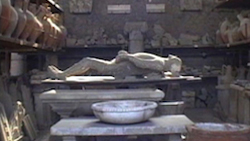
1997-99, 11:10 min, color, sound
1997-99, 11:10 min, color, sound
Ordering & Fees
Educational Purchase
DVD NTSC
$420.00
Archival Purchase
BetaSP NTSC
$1,100.00
Digital Beta NTSC
$1,600.00
Digital Beta PAL
$2,000.00
Also available on
2012, 63:53 min, color and b&w, sound